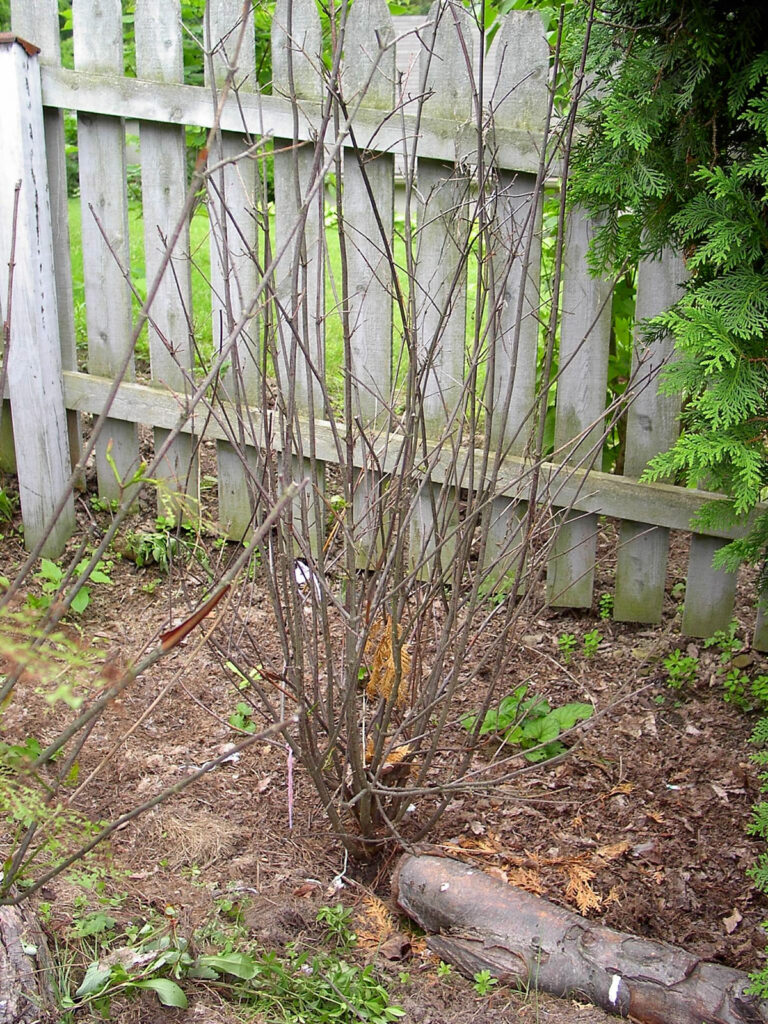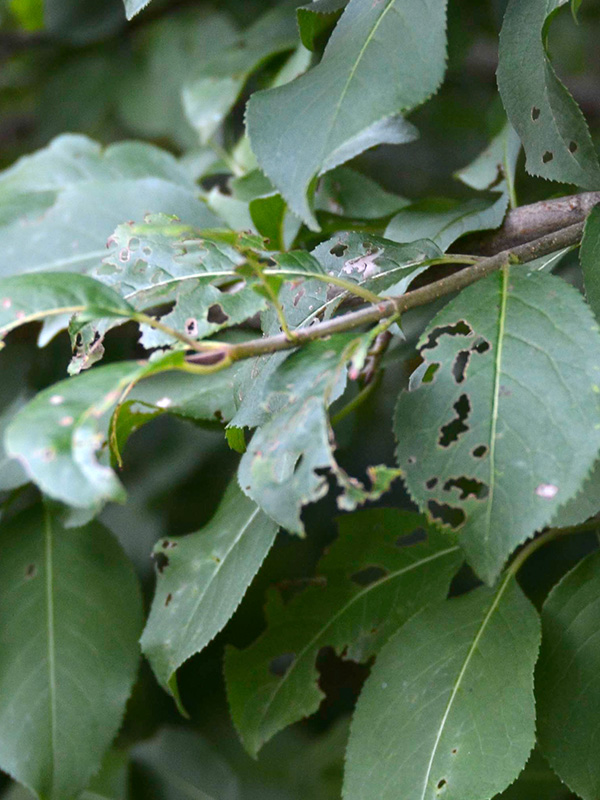
The year before the viburnum leaf beetle arrived in Central New York, I had purchased three quite expensive arrowwood viburnums (Viburnum dentatum) — only to discover the next year that that particular variety is one of their favorites!
A few years later, the bushes were dead, having been repeatedly stripped of their leaves (as in the photo). I was motivated to participate in this one.
The Viburnum Leaf Beetle community science project involved both plants (viburnums) and an insect (the viburnum leaf beetle). NOTE: When I last checked in Nov. 2017, data collection for this project seems to have been discontinued.
Viburnums have been common in both public and private landscape plantings and in the wild, but this imported pest has already caused considerable damage to our landscape and has the potential to keep spreading, destroying even more of this valuable habitat plant.
By participating in this project, we learned how to identify the beetle and various viburnum species. Years ago, I assumed that viburnums were a native species, but I learned that the viburnum genus has many species, some native and some from other parts of the world. Unfortunately, many of the viburnums being sold are not native (even before the beetle arrived).
The Viburnum Leaf Beetle Citizen Science Project has helped gardeners as well as scientists, and the data community scientists submitted helped determine which species of viburnums are most and least susceptible to this non-native pest.
BUT wouldn’t you know it — the least susceptible tend to be non-native viburnums and the most susceptible tend to be the native viburnums (such as this nanny berry viburnum), which are most important to wildlife (as well as very attractive landscaping plants).

I’m afraid that many people’s conclusion, though, will be that it’s better to plant the less susceptible non-native viburnums. I’ve decided to eliminate the non-native viburnums, take my chances on the few native viburnums I have, and use the space formerly taken by the non-native viburnums to plant some other native shrubs.
What will be interesting to find out is whether the beetle is in a downward trend, having eliminated much of its host plant. I would guess that the populations of beetles and viburnums will tend to seesaw in the future, but we’ll see.
Resources
Cornell’s Viburnum Leaf Beetle page has videos showing adults laying eggs, larva emerging, larva feeding, and adults feeding.
